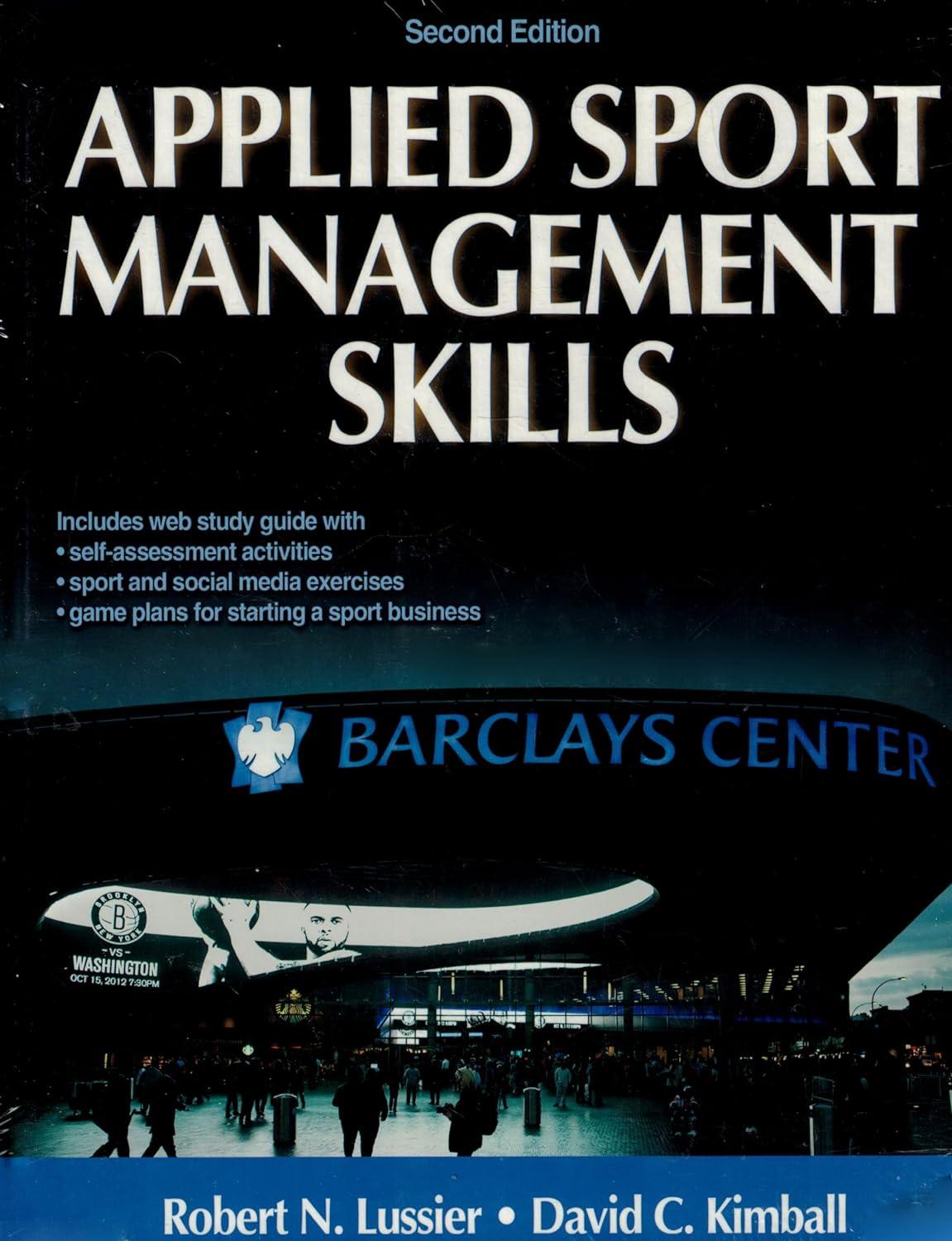Until the late 1970s, the job of a college AD was easy. In the old days, colleges
Question:
Until the late 1970s, the job of a college AD was easy. In the old days, colleges often gave the AD job to the football coach when he retired.78 Playing golf with alumni was a big part of the job then. The times, how they change!
To say that ADs have many more job responsibilities today is a bit of an understatement.
ADs in the United States supervise coaching staff and teams, oversee million-dollar budgets and requisitions, work with coaches to schedule events and travel itineraries, help plan facilities, issue contracts for home contests, watchdog player eligibility, maintain records of players and insurance coverage for all athletes, manage crowd behavior at events (are you tired yet?), fund-raise, attend booster club meetings, supervise the sport information director, maintain marketing publications, attend professional meetings, develop staff, and conduct weekly meetings to monitor progress!
The AD job is just one of many positions in large U.S. collegiate organizations—college sports are big business today. The AD may have an associate director, a sport information director, academic advisors, ticket managers, and event managers. For instance, at Ohio State University, Gene Smith is in his seventh year as AD.79 He oversees a department of more than 300 employees, 377 acres (1.52 square kilometers) of land, 16.9 million square feet (1.57 square kilometers) of buildings, 926 varsity athletes, and 36 varsity sports. His major constraint (besides human ability) is the National Collegiate Athletic Association rulebook. Ohio State must comply with these rules or face sanctions. Smith has a nineperson NCAA rules-compliance staff.
AD jobs are also more complicated because external factors are changing so rapidly.
ADs must keep up with legal issues such as Title IX in the United States, which requires equal access to education (including athletics) for women. Recruiting athletes is increasingly competitive because more colleges actively pursue athletes as they endeavor to build winning teams. And unfortunately, athletes (like the wider population) face a wide variety of social problems such as AIDS, drug addiction, and sexual harassment.
Fund-raising is a constant endeavor—athletic operations are extremely expensive. The athletic department at Ohio State is expected to operate like a business and at least break even. As AD, Gene Smith uses the sales and marketing strategies of professional sport: seat licenses, luxury boxes, corporate sponsorships, new arenas, and high ticket prices. In fiscal year 2006, Ohio State’s athletic department earned a profit of U.S.\($2.9\) million on revenues of U.S.\($104.7\) million. The football team alone brought in U.S.\($60.7\) million with a net profit of U.S.\($28.4\) million.80 However, the Ohio State football team was not to play in the postseason in 2012, and the program was to lose nine scholarships between 2012 and 2015 as a result of a scandal that cost football coach Jim Tressel his job. The NCAA found Ohio State guilty of failure to monitor the program after it said eight players had received cash from the owner of a tattoo parlor. AD Smith was surprised that the punishment was so severe.81 Would you like to be an AD? An assistant AD? A coach? A sport information director? Visit www.jobsatosu.com for information on jobs in Ohio State’s athletic department.
Case Questions
Select the best alternative for the following questions. Be able to explain your answers.
1. The forces for change in an AD’s job came from which environment?
a. external
b. internal
c. both.
2. The change variable in AD jobs has primarily been what type of change?
a. strategy
b. structure
c. technology
d. people.
3. ADs in the United States are not obliged to provide equality for women’s sports.
a. true
b. false.
4. Part of the reason for change in an AD’s job responsibilities was to make the athletic department more cost-effective.
a. true
b. false.
5. The primary way to overcome resistance to change as an AD is by
a. developing a trust climate
b. planning
c. stating why change is needed and how it will affect employees
d. creating a win–win situation
e. involving employees
f. providing support g. all of the above.
6. An AD’s job should be organized around the principles of TQM.
a. true
b. false.
7. Ohio State has learned to use professional marketing techniques such as corporate sponsorships to keep up with increasing costs in running an athletic department.
a. true
b. false.
8. ADs perform which of the following job responsibilities?
a. helping plan facilities
b. watchdogging player eligibility
c. scheduling events
d. organizing travel itineraries
e. all of the above.
9. Managing diversity is an important part of an AD’s job.
a. true
b. false.
10. ADs are in a position to mentor many employees.
a. true
b. false.
11. In what sorts of situations do you think ADs use team-building skills?
Step by Step Answer:

Applied Sport Management Skills
ISBN: 275519
2nd Edition
Authors: Robert N. Lussier, David C. Kimball





